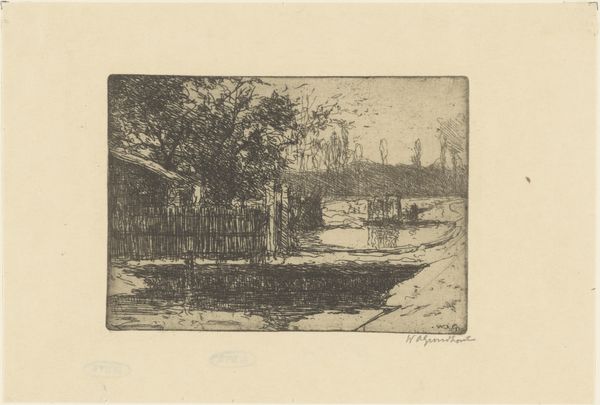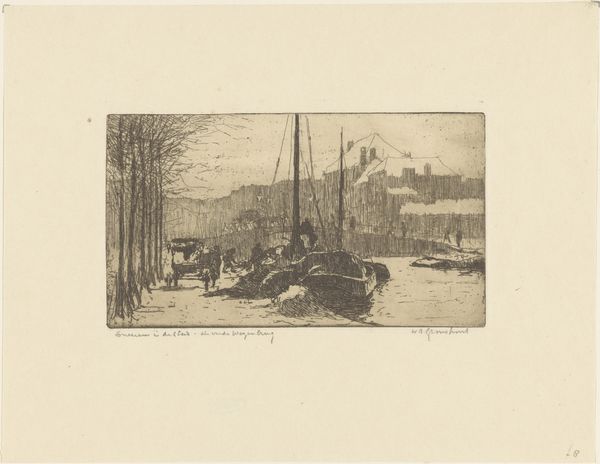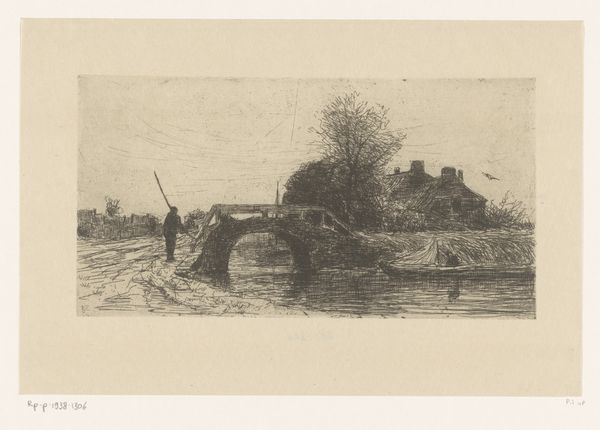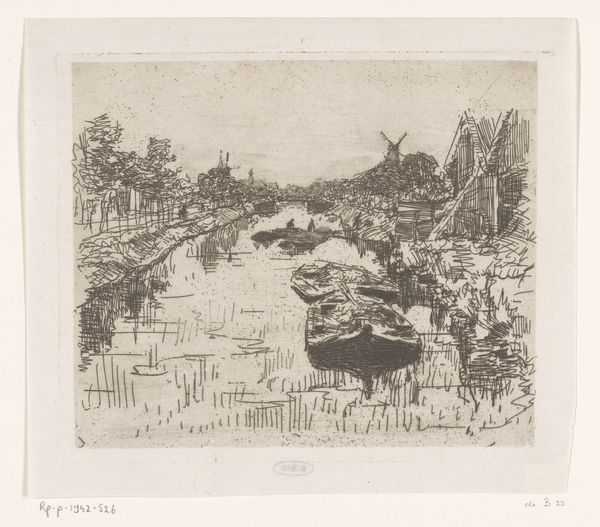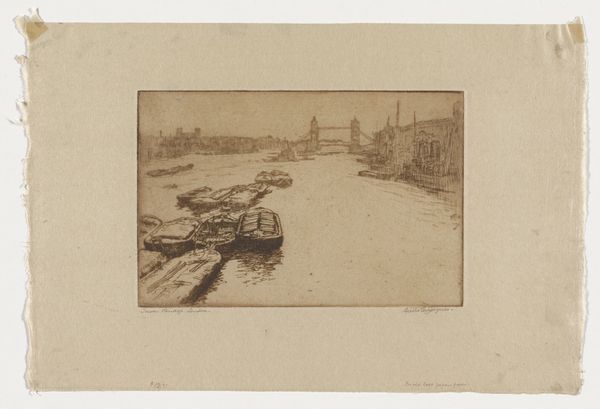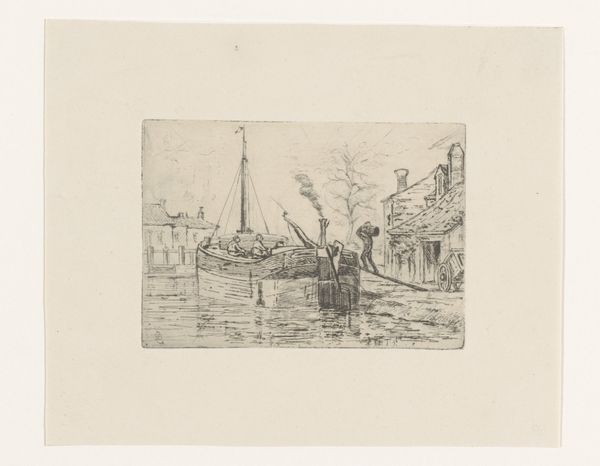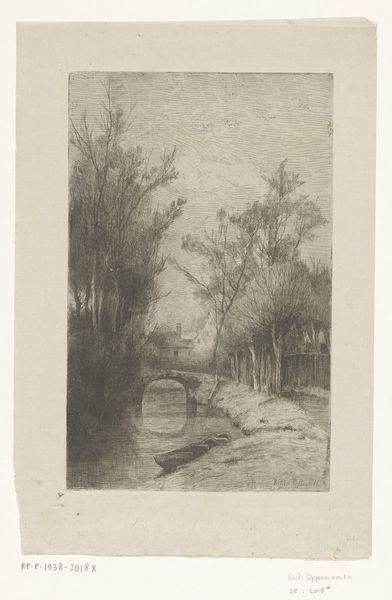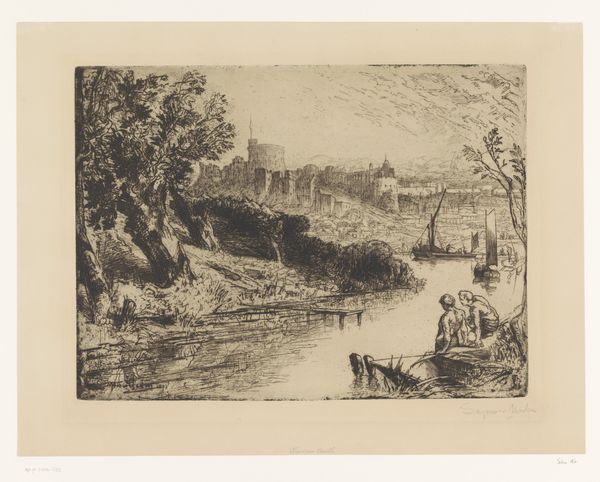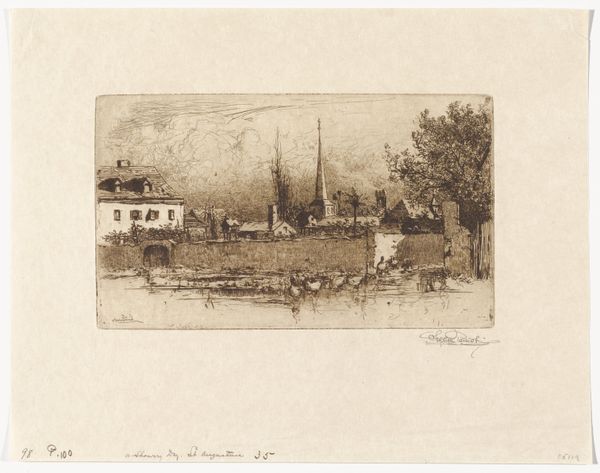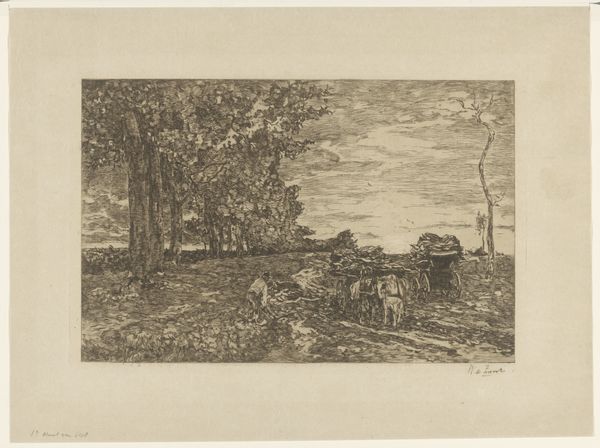
drawing, print, etching
#
drawing
# print
#
impressionism
#
etching
#
cityscape
#
genre-painting
Dimensions: Sheet: 7 13/16 × 11 5/8 in. (19.8 × 29.6 cm) Plate: 5 7/16 × 8 9/16 in. (13.8 × 21.8 cm)
Copyright: Public Domain
Editor: So, this is "Quai Voltaire," an etching by Giuseppe de Nittis, created around 1876. It's a pretty small print, but the level of detail is amazing! The composition creates a somewhat somber, almost haunting mood with the bare trees. What do you see in this piece, especially from a formalist approach? Curator: The artist's command of line is immediately apparent. Notice how the delicate, almost frenetic, hatching defines the forms of the trees and buildings. This etching exemplifies Impressionist tendencies, not through color, but through the modulation of light and shadow via intricate networks of lines. Editor: It’s interesting you say that. I initially thought the lack of color gave it a unique sense of dynamism! Could you elaborate more on this relationship with Impressionism? Curator: Observe how the artist captures the fleeting effects of light on the water and the distant buildings. It isn’t so much a depiction of concrete forms as it is a rendering of atmospheric conditions. The work's true subject is the quality of light. Also, do you note the stark contrast between the density of the foreground foliage and the openness of the sky? This play with values and forms is intentional. Editor: I see what you mean! The balance achieved is subtle. Did other etchers at the time experiment with using the light effects the same way? Curator: Precisely. Notice how De Nittis orchestrates variations to create the desired tonal nuances. The structural arrangement is as deliberate as any painting. By abstracting shapes through monochromatic hatching and blurring, he compels the viewer to question if seeing is simply believing. What did you learn from studying this piece? Editor: Well, now I am more attuned to how mark-making defines Impressionism and overall pictorial space. It encourages new considerations when regarding atmospheric effects through line and light, which goes beyond what is traditionally assumed as composition and structure. Curator: Indeed. Looking closely can bring new understandings, both formally and structurally.
Comments
No comments
Be the first to comment and join the conversation on the ultimate creative platform.
